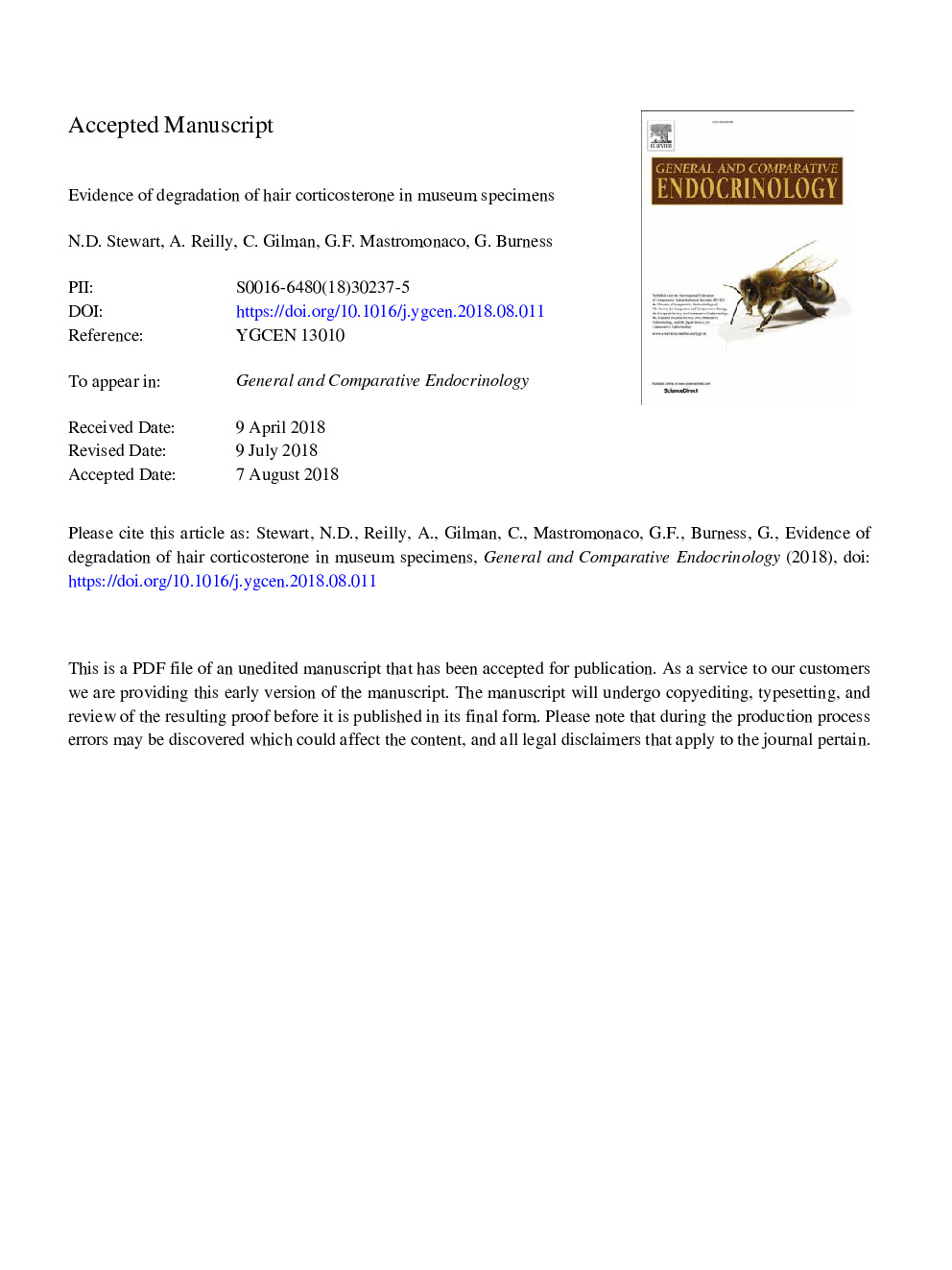| Article ID | Journal | Published Year | Pages | File Type |
|---|---|---|---|---|
| 11022679 | General and Comparative Endocrinology | 2018 | 31 Pages |
Abstract
Researchers increasingly rely on non-invasive physiological indices, such as glucocorticoid (GC) levels, to interpret how vertebrates respond to changes in their environment. Recently, hair GCs have been of particular interest, because they are presumed stable over long periods of storage, which may facilitate the study of large-scale spatial and temporal patterns of stress in mammals. In the current study, we evaluated the stability of hair corticosterone levels in museum specimens, and the potential effects of different museum curation treatments. Using deer mouse (Peromyscus maniculatus) specimens collected from Vancouver Island (11 sites, 82 individuals) over 76â¯years, we found that specimens collected earlier in the 20th century had lower hair corticosterone than more recently collected specimens. These results suggest that hair hormone levels may not be stable over decades of storage time. We then subjected hair samples collected from white-footed mouse (Peromyscus leucopus, nâ¯=â¯36) to 3 different museum curation treatments, and found that borax lowered hair corticosterone levels relative to control samples, but air drying samples, or treating them with turpentine had no effect. Our results present a source of concern for the use of museum specimens for hair hormone analysis, and for studying long term trends in glucocorticoid levels.
Keywords
Related Topics
Life Sciences
Biochemistry, Genetics and Molecular Biology
Endocrinology
Authors
N.D. Stewart, A. Reilly, C. Gilman, G.F. Mastromonaco, G. Burness,
